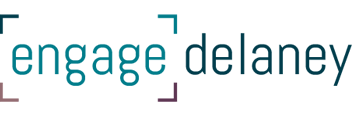All About Decision Statements: Part 1
If you have taken International Association of Public Participation (IAP2) training with Engage Delaney, you’ve likely heard a lot about the “decision statement” – and why it’s important. It’s also possible that you have wrestled with how to formulate a decision statement in the context of your own work, either during or after the course.
You’re not alone. Follow-up questions about the decision statement are pretty common. We’ve had a few lately, so we wanted to share some context – and hopefully clarity – with our online community. This is the first in a two-part blog series on decision statements.
The first thing to know is that even though the decision statement doesn’t include any details about the engagement or public participation process, it’s a key component of the engagement planning foundation. Only by first clearly articulating WHAT will be decided, by WHO, and WHEN, can we start to identify the opportunities for including stakeholders and the public in the process.
Or, as outlined in the IAP2 Planning manual: “A clear statement of the problem to be solved, the opportunity to be explored or the decision to be made is needed before developing a public participation plan.”
The decision statement is usually a single sentence about what decision we are preparing to make. The statement is really the “intent” of what we will decide. Stated differently, it is the essence of what we are intending to do. Typically the decision will instigate a change.
The statement itself has a specific structure so that it can inform some of the steps that follow in the engagement planning process, such as impact analysis and stakeholder identification. The structure of the decision statement has three parts:
1. The essence or intent of the change (this could be a new or revised policy, plan, program or project)
2. The authority who will make the decision, and
3. The timing for the decision
Another way to approach the decision statement is to think about capturing the ultimate purpose or outcome of the project, policy or initiative. Ask yourself (and your engagement planning team members):
1. What is the project?
2. Who will make the final decision?
3. What is the timeline, or deadline, for the project?
An example in a municipal government context might be: Council (2) will adopt a new Parks and Recreation Master Plan (1) by November 30, 2016 (3).
Having a clear, succinct statement about what will be decided sets us up to conduct an impact analysis so that we can identify those impacted – the stakeholder community. If you are not impacted by the decision, then you are not a stakeholder.
Check back later this week for Part 2, which will include more about why the decision statement is important, and how it contributes to your communications messaging around your engagement project.
Do you have questions? Start a conversation with us (and other members of the online D+A community) on Facebook, Twitter or LinkedIn. Or, send me an email at delaney@rmdelaney.com.



